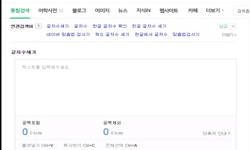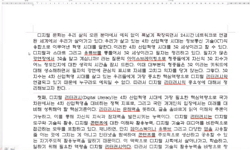경주 교동 최씨가[최부자댁]에서 소장하고 있는 334건의 추수기·수세기 자료는 교동 최씨 가의 지주 경영 방식을 파악할 수 있는 중요한 문서군이다. 이중 274건은 경주시와 울산 북부 지역 ...
http://chineseinput.net/에서 pinyin(병음)방식으로 중국어를 변환할 수 있습니다.
변환된 중국어를 복사하여 사용하시면 됩니다.
- 中文 을 입력하시려면 zhongwen을 입력하시고 space를누르시면됩니다.
- 北京 을 입력하시려면 beijing을 입력하시고 space를 누르시면 됩니다.

경주 교동 최씨가 소장 추수기(秋收記)·수세기(收稅記) 자료의 전존 현황과 특성 = A Study on the Characteristics and Values of Collections Possessed by Gyeongju Choi’s Clan called as ‘Rich Men’ - Focusing on the Historic Materials on Harvest Season -
한글로보기https://www.riss.kr/link?id=A107843968
- 저자
- 발행기관
- 학술지명
- 권호사항
-
발행연도
2021
-
작성언어
-
-
주제어
경주 교동 최씨 ; 최부자댁 ; 추수기 ; 수세기 ; 타조 ; 단갈림 ; 도조 ; Gyeongju Choi Clan in Gyodong ; Rich Men Choi ; Materials of Harvest Season ; Chusu-gi ; Suse-gi ; Tajo ; Dangalim
-
등재정보
KCI등재
-
자료형태
학술저널
-
수록면
63-92(30쪽)
- DOI식별코드
- 제공처
- 소장기관
-
0
상세조회 -
0
다운로드
부가정보
국문 초록 (Abstract)
경주 교동 최씨가[최부자댁]에서 소장하고 있는 334건의 추수기·수세기 자료는 교동 최씨 가의 지주 경영 방식을 파악할 수 있는 중요한 문서군이다. 이중 274건은 경주시와 울산 북부 지역 일대의 논에서 지대를 수취하기 위해 작성된 추수기 자료들이다.
최씨가의 추수기에서 확인되는 주요한 특징은 다음과 같다. 첫째, 干支를 기준으로 작성연대를 추정하였을 때, 19세기 후반부터 일제시기 전반에 이르는 시계열 분포를 보인다는 점이다. 둘째, 같은 해에 작성된 여러 형태의 추수기가 남아 있고, 추수기 사이에 모종의 상관관계가 확인된다는 점이다. 셋째, 일제시기까지 대부분의 논에서 打租의 방식을 적용하여 추수기를 작성하였다는 점이다. 비슷한 시기 다른 지역의 추수기에서 확인되는 지대수취 방식은 대부분 執租와 賭租인데 반해, 교동 최씨가의 추수기는 作人과 種子, 稅米까지도 공동 분담하는 형식을 띤 것으로 보인다. 이 때문에 추수기 상에 作人과 斗落, 種子·卜價를 먼저 쓰고, 추수 후 이를 공제하여 반분한 내역을 나중에 기재하는 방식으로 추수기를 작성하였다. 실제로 경주지역 작인들 사이에서 최씨가의 지대수취 방식을 ‘단갈림한다’고 표현하였다.
한편 교동 최씨가에서는 밭작물인 보리와 콩 수확을 관리하고 지대를 수취하기 위한 목적에서 별도의 수 세기를 작성하였으며, 현재 남아 있는 건수만 60점으로 확인된다. 추수기에 대한 다양한 사례 연구가 발표된 바 있지만, 밭작물의 지대수취 내역을 이처럼 오랜 기간 수세기 형식으로 작성한 경우는 드물다.
일부의 사례를 검토한 것이기는 하지만, 최씨가의 추수기에서 확인되는 평균 지대량은 당대 다른 지역의 지대량과 큰 차이를 보이지 않는다. 반면 작인에게서 거둔 보리와 콩의 평균 지대량은, 도조의 방식으로 수취하였기 때문에 절대 생산량을 짐작하기 어려움에도 불구하고 현저히 적은 액수로 파악된다. 이는 최씨가에서 가경지를 제외한 나머지 밭을 작인들에게 대여해주고 최소한의 지대만 수취한 결과로 여겨진다. 이처럼 최씨가의 지주 경영은 당대 다른 지역 사례와 차별되는 측면들이 있다. 본고에서는 전체적인 자료의 현황과 작성방식을 분석하는 데 논의의 초점을 맞추었기 때문에, 향후에는 본고에서 미처 다 해결하지 못한 부분들을 보완하여, 구체적인 지대량의 추이를 살펴보기로 하겠다.
다국어 초록 (Multilingual Abstract)
Over 330 historic materials on harvest season possessed by ‘Rich Men’ Gyeongju Choi clan in Gyeongju Gyodong are important documents that can be used to reveal Rich Men Choi’s unique landowner management cases. Among which, 274 are the data writ...
Over 330 historic materials on harvest season possessed by ‘Rich Men’ Gyeongju Choi clan in Gyeongju Gyodong are important documents that can be used to reveal Rich Men Choi’s unique landowner management cases. Among which, 274 are the data written during harvest season for the purpose of receiving rent from the land distributed sporadically in Gyeongju and northern part of Ulsan.
The major characteristics identified in Rich Men Choi’s historic house are as follows. First, when estimating the whole data, it showed chronological distribution from the late 19<sup>th</sup> century to the first half season of Japanese occupation. Second, different types of harvest materials written during the same year co-existed and a certain correlation between them is identified. Third, up to the Japanese colonial period, most paddy fields of Gyeongju Choi clan applied ‘Tajo(打租: receiving a rent with a half-dividing of the harvest)’method. Rent acquisitions identified in other regions in contemporaries were ‘Jipzo(執租: adjusting rent rates before harvesting)’ or ‘Dojo(賭租: receiving a rent with a certain amounts of harvest)’. However Rich men Choi clan shared in half of seeds and rice straws with tenant farmers. So among tenant farmers in Gyeongju, Rich men Choi’s rent acquisition method was called as ‘Dangalim(indicating 5:5 allocation).’
On the other hand, Rich men Choi wrote separate materials to menage barley-farm product and bean harvest and there were now 62 of them have been remained. Various case studies on harvest records of paddies have been published, but few rent aquisition cases from harvest of bean and barley have been identified. Rich men Choi’s average rent identified during harvest season does not show a big difference from the rent amount in other regions, although it reviewed a part of all cases. But the average rent of barley and bean collected from the tenant farmers is significantly low despite the difficulties in guessing the absolute production because they received rent in the way of Dojo. This is considered as a result of lending the rest fields except the arable lands of Rich men Choi to tenant farmers and receiving the minimum rent. Like this, Rich men Choi’s landowner management has a difference from the cases of other regions. In this paper, the focus is on analyzing the current status of the entire data and how it was written. So further studies need to complement the insufficient parts that were not resolved in this paper and reveal the specific historic points of view about Rich Men Choi’s landowner management case.
동일학술지(권/호) 다른 논문
-
- 한국고문서학회
- 조남곤 ( Jo Nam-gon )
- 2021
- KCI등재
-
- 한국고문서학회
- 김정수 ( Kim Jeong Su )
- 2021
- KCI등재
-
박태보의 자기비첩소생(自己婢妾所生)의 신분 귀속에 대 한 인식 - 「단송안(斷訟案)」을 중심으로 -
- 한국고문서학회
- 한상권 ( Han Sang-kwon )
- 2021
- KCI등재
-
- 한국고문서학회
- 전경목 ( Chon Kyoung Mok )
- 2021
- KCI등재





 KCI
KCI KISS
KISS




